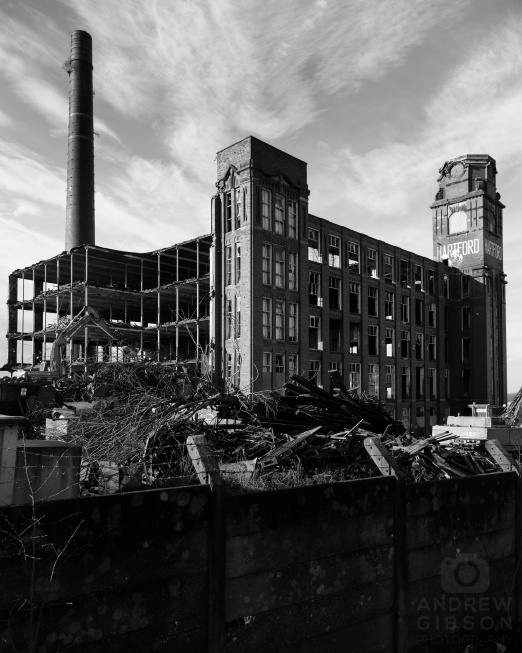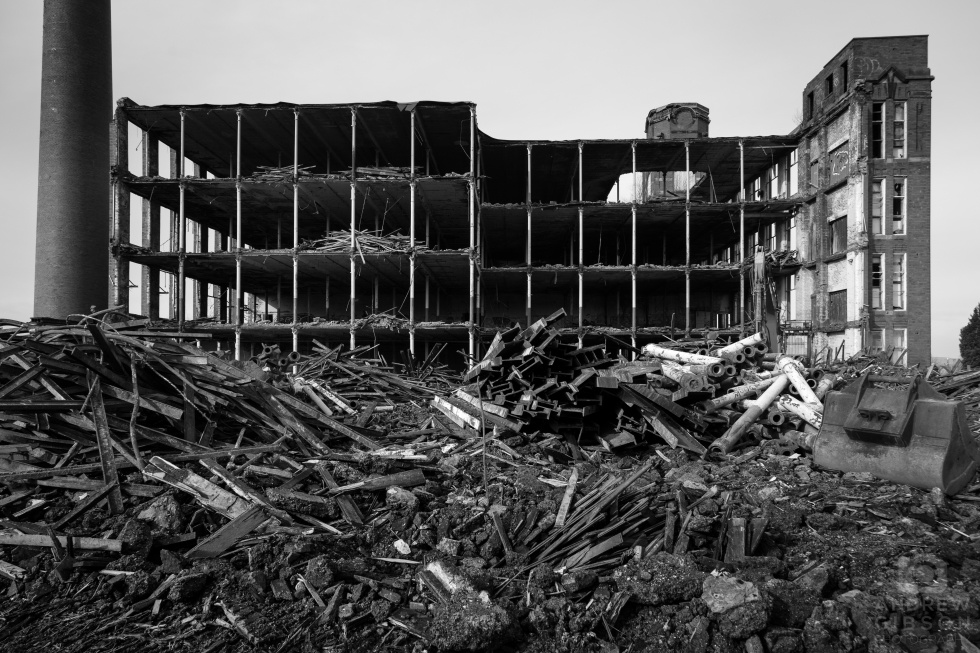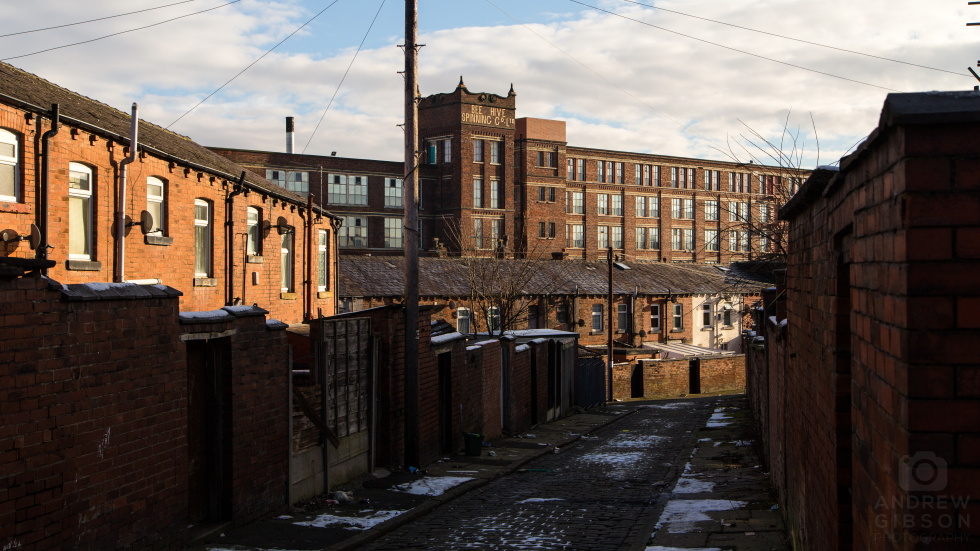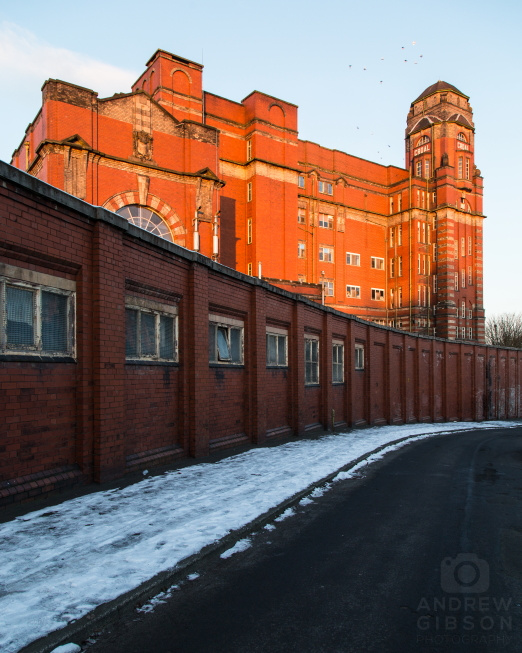In its heyday Greater Manchester had over 1000 textile mills spinning cotton in the damp air, a sea of chimneys protruding above the smog that hung over a neat and considered grid of streets flanked by terraced housing. This vision of the Industrial Revolution endures to this day, perfectly epitomising the heritage of the north in the paintings of LS Lowry.
Their solid, grand construction made them appear more like industrial cathedrals than any utilitarian means-to-an-end and their presence has long outlived the industry for which they were designed, crafted with care, embellished with detail, built to last. Yet since the 1980s a staggering 45% – and rising – have been lost, and while a number have been converted they are still disappearing at an alarming rate to fire, vandalism and demolition.
In its heyday the Metropolitan Borough of Oldham had over 360 of those mills and was considered the spinning capital of the world. Architect FW Dixon was responsible for 22 of them, the future mayor facilitating a significant proportion of the town’s top-ranking output with a combined 1.8 million spindles. His showpiece was Hartford (built 1907), a once grand statement in red Accrington brick latterly stranded in a twilight zone blighted by anti-social behaviour. Its vandalised form appeared to glower menacingly across the area and it came as close as you’d get to the proverbial ‘dark satanic mill’ – but it was fascinating.
It was an adventurous covert wander within its walls a few years ago that first led me there, and it was the onset of its long anticipated demise that brought me back this week.


Demolition had only begun a week ago but the initial press pictures showed a third of it already missing. Hartford’s cast iron skeleton was exposed for all to see and if I wanted to capture its final hours I’d have to be quick about it.
Conveniently I was in the area anyway. Even more conveniently the seemingly endless storms and rain had subsided for the morning, and after picking my way round the perimeter taking a few shots of the now less-than-half remaining, the demo guys were welcoming enough to talk to me about the job over a brew. Very much appreciated.


The sad thing about watching these mills come down is that they could readily be re-purposed for other industry, or converted to apartments, office accommodation, or for cultural and community use. Their physical presence adds character, height and detail to the skyline and contributes to the local sense of identity and heritage. A 2017 YouGov/Historic England poll revealed that 85% of the population didn’t want to see them demolished and replaced, and their continued loss is more than just sad – it’s sacrilegious.
To be fair, with Hartford it wasn’t for want of trying to secure a new use, and it had just about edged beyond salvation in its almost 30-years of dereliction. The fact that it was demolished despite its Grade II listed status was unfortunate but perhaps inevitable. Over in Bolton however there seemed to be no such good reason to drop the Beehive Mills (1895-1902), which carried equal listing and was in far better condition. It’s a practice that sets a concerning precedent for architectural heritage.
The view below is typical for a mill town. Now imagine it without the mill – it was demolished last year to make way for housing.

There are still around 1100 mills in Lancashire and Greater Manchester. That sounds a lot, but it’s only half of what was there 30 or 40 years ago, and while you wouldn’t want to keep every building forever you certainly wouldn’t want to live in a never-ending low rise mess of new build homes and industrial prefabs without the history, variation or identity needed to knit it all together. It’s hard to imagine Lowry sat painting that scene…
I’m no stranger to derelict buildings or demolition sites, and much as it does fly in the face of my attitudes towards architectural heritage I was interested to see Hartford’s demise first hand. It’s always a shame to lose something that’s dominated its surroundings for so long but I’m pleased with the black and white shots I took of it in the throes of demolition and grateful to the guys for indulging me. Hopefully there won’t be too many more lost…
I’ll leave you with the sunrise over Croal Mill, one of Bolton’s landmarks still standing and still in use.

Until next time, thanks for stopping by.

Comments
Glen Adair
Andrew